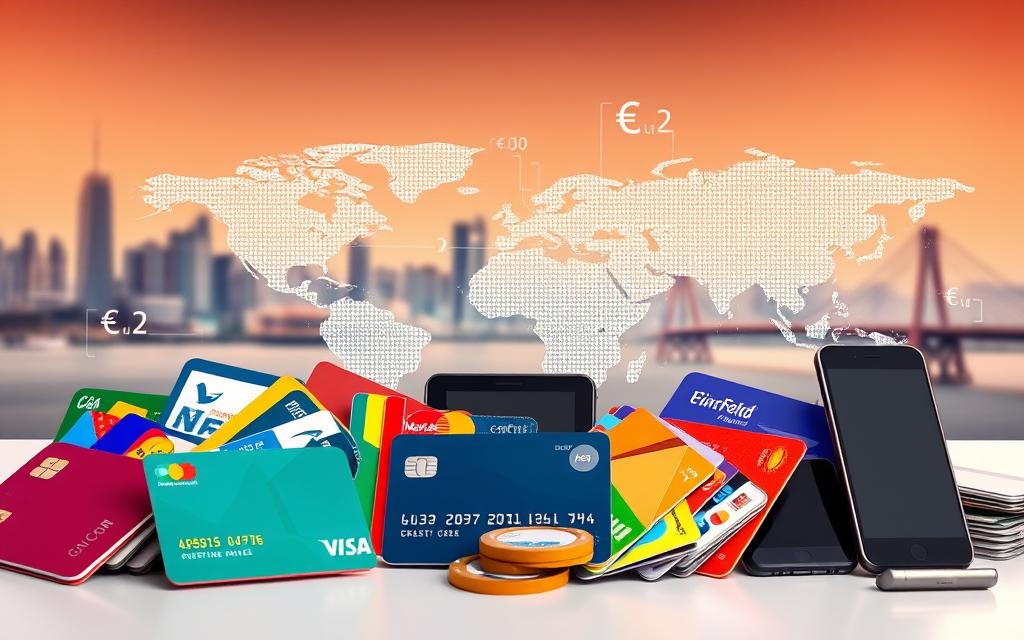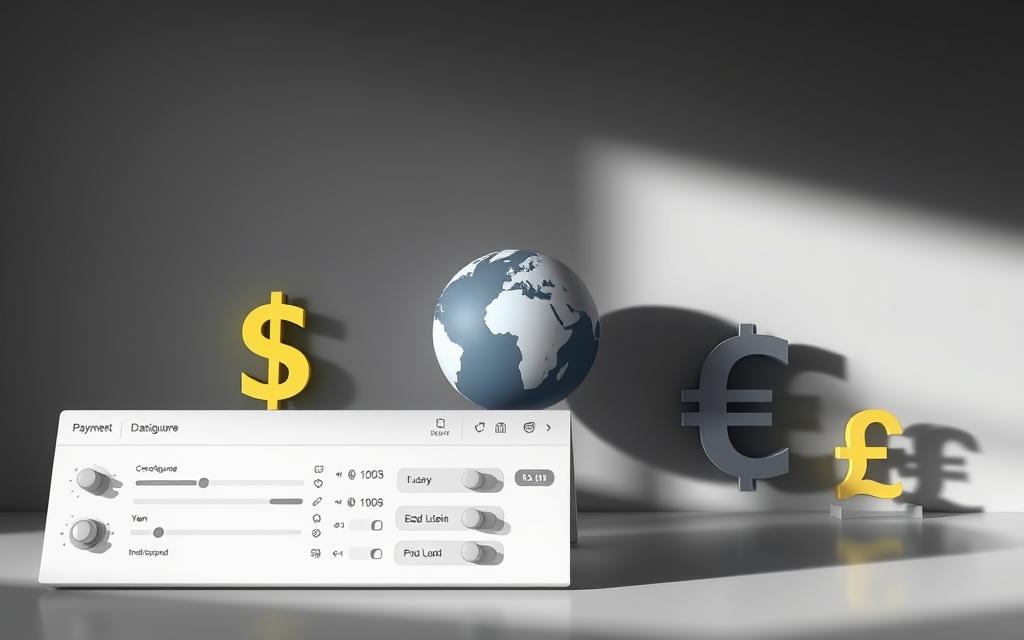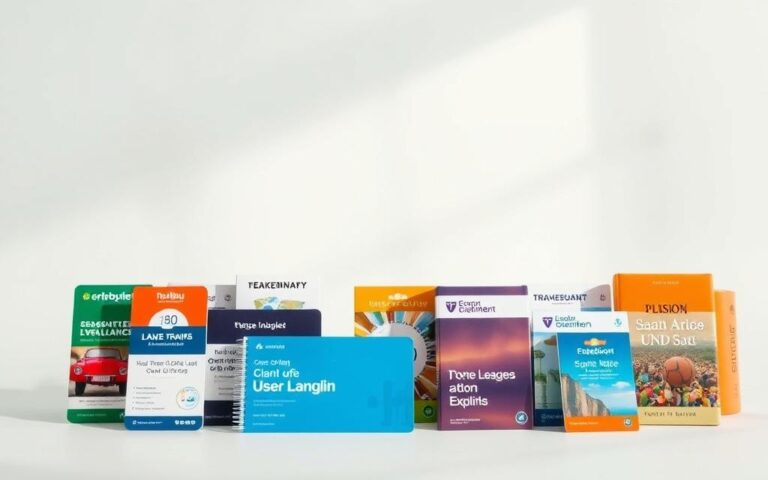Advertisement
Did you know over 60% of people are more likely to buy when they can pay in their currency? This fact highlights how crucial it is to know how to get paid in several currencies. It’s especially vital for businesses and freelancers in the global market. As the world becomes more connected, finding ways to accept multiple currencies is key.
Whether you’re running a small business or freelancing, understanding international payment methods is important. It helps you grow your audience and increase your earnings by receiving payments from anywhere. This article will cover key tips for handling global payment challenges.
Understanding Multi-Currency Payments
Multi-currency payments are becoming more popular in global business. They let customers and companies do business in different currencies. This way, merchants can offer more payment options to international customers. Multi-currency payments make transactions easier and more convenient for everyone.
What Are Multi-Currency Payments?
Multi-currency payments let businesses take money in various currencies without swapping them manually. This makes buying things easier for international shoppers. Companies can receive money in the shopper’s favorite currency. This reduces confusion and improves the buying process. It’s crucial for companies aiming to grow internationally.
Benefits of Accepting Multiple Currencies
Offering payments in multiple currencies has many benefits. It attracts more international buyers by letting them pay in their currency. This attention to detail can boost sales. Also, using multi-currency payments adds flexibility for businesses. This can help keep customers and build loyalty. Having multi-currency accounts can also protect against currency changes, leading to financial security.

Choosing the Right Payment Gateway
Finding the right payment gateway is key for businesses dealing in different currencies. A good multi-currency payment gateway makes buying smooth for customers and helps with global sales. There are many to choose from, each with its own features and benefits.
Popular Multi-Currency Payment Gateways
Some top choices for businesses are:
| Payment Gateway | Key Features | Transaction Fees | Supported Currencies |
|---|---|---|---|
| PayPal | Easy integration, buyer protection, robust security | Varies by country, typically around 2.9% + $0.30 | Over 25 currencies |
| Stripe | Developer-friendly, subscription billing, customizable | Standard fee of 2.9% + $0.30 | 135+ currencies |
| Wise | Low conversion fees, transparent pricing, quick transfers | Varies, usually lower than banks | 50+ currencies |
Factors to Consider When Selecting a Gateway
When picking a payment gateway, think about:
- Integration capabilities: It should work well with your online store.
- Transaction fees: Look at the costs. This is especially important for payments to other countries.
- Customer support: Good support is crucial for dealing with any problems.
- Supported currencies: Make sure it accepts the currencies your customers use.

Setting Up Your Multi-Currency Account
Creating a multi-currency account is key for handling international payments well. This account lets businesses keep, manage, and use different currencies easily. Knowing how to set it up correctly is vital, especially for businesses wanting to grow globally.
Steps to Open a Multi-Currency Account
There are some important steps to start setting up a multi-currency account:
- Choose a bank, traditional or online, that offers these types of accounts.
- During the application, provide the needed personal or business info.
- Make sure all the info on the application form is right.
- Send in the application and wait for approval. The time this takes can change depending on the bank.
Required Documentation for Account Setup
You’ll need certain documents to open the account:
- Identification: Something official like a passport or driver’s license.
- Proof of residence: A bill or lease agreement that shows where you live.
- Business certificates: If it’s for a business, things like incorporation certificates or business licenses.
Managing Currency Conversion Rates
Knowing how to handle currency conversion is key for global businesses. It helps to know when to trade currencies and can boost profits. With the right info and tools, companies can deal with changing exchange rates well.
How to Track Conversion Rates
Keeping up with currency rates takes a smart plan. It’s important to be up-to-date on market trends that might impact your business. Setting up alerts or using financial news services can help. Regular updates from banks or online platforms are good ways to stay informed. This helps you decide the best times to buy or sell in different currencies.
Tools for Monitoring Exchange Rates
There are many tools out there to help track currencies and manage exchange rates. Platforms like XE.com, OANDA, and Google Finance offer current rate information. Each of these platforms has something special to offer:
| Tool | Key Features | Best For |
|---|---|---|
| XE.com | Live rate updates, currency converter | Individuals and small businesses |
| OANDA | Historical exchange data, analysis tools | Medium to large businesses |
| Google Finance | Simple tracking, integration with Google services | General users and casual tracking |
Using these tools to watch exchange rates can help businesses spot the best times to convert currencies. This can save money and boost profits. Managing exchange rates carefully is crucial for successful international deals.
Best Practices for Multi-Currency Transactions
In our world today, e-commerce connects us more than ever. Companies need to handle multi-currency transactions well to succeed. Managing these payments right boosts how well a company runs and makes customers happier. We will look at important tips, like cutting down on fees and offering local currency choices to customers.
Minimizing Transaction Fees
Keeping transaction fees low is key to earning more in multi-currency deals. Companies should carefully choose their banking and payment partners. By comparing fees and knowing the rates for different currencies, businesses can save money. Also, using tools that show the fees for various currencies helps companies make smart money choices.
Enhancing Customer Experience with Local Currencies
Letting customers pay in their local currency makes their shopping experience better. It makes buying things easier and helps build trust. When prices are in a currency customers know, they’re more likely to buy. Companies should use payment gateways that support many currencies to make customers feel important. Doing this helps keep customers coming back and grows business in a world that’s more connected than ever.



